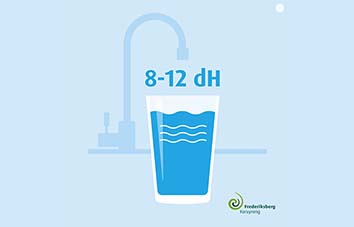Recommendation: Turn off your local water softener
Together with the environmental authority in Frederiksberg Municipality, we urge everyone to turn off local ion exchange-based water softeners once the new waterworks are ready to supply the city with softened water.
Exceeding the sodium threshold value
We recommend that you turn off your local ion exchange-based water softener if the water is used for drinking or cooking. If you do not turn off the system, the content of sodium in the water will exceed the threshold value.
The softening process causes the sodium content in the water to increase from 20-60 mg/l to 120-160 mg/l.
Ion exchange-based water softeners increase the content of sodium in the water by 80-90mg/l. And as the threshold value for sodium is 175 mg/l, you will exceed this limit if you fail to turn off the system.
Sodium is a chemical element, which makes up around 40 per cent of regular table salt (NaCl). The remaining 60 per cent is chloride. Large amounts of sodium can negatively affect the health of vulnerable groups.
If the water from the local softener is used in work processes that do not involve drinking the water or using it for cooking, then of course there is not health risk.
If you have a bypass ion exchange system, you need to change the settings to avoid exceeding the threshold value for sodium.
Increased risk of corrosion on water fittings
Another reason to turn off your local water softener is the increased risk of corrosion on water fittings.
Exposure to hard water results in significant amounts of limescale. The new softened water will stabilise the calcium content, but if it is further reduced by local softeners, the water in the pipes becomes lime-aggressive, and that will increase the risk of corrosion, i.e. causing the metal to decompose.
The risk is highest for cast iron, black steel and hot-galvanised steel fittings and domestic hot water fittings.




